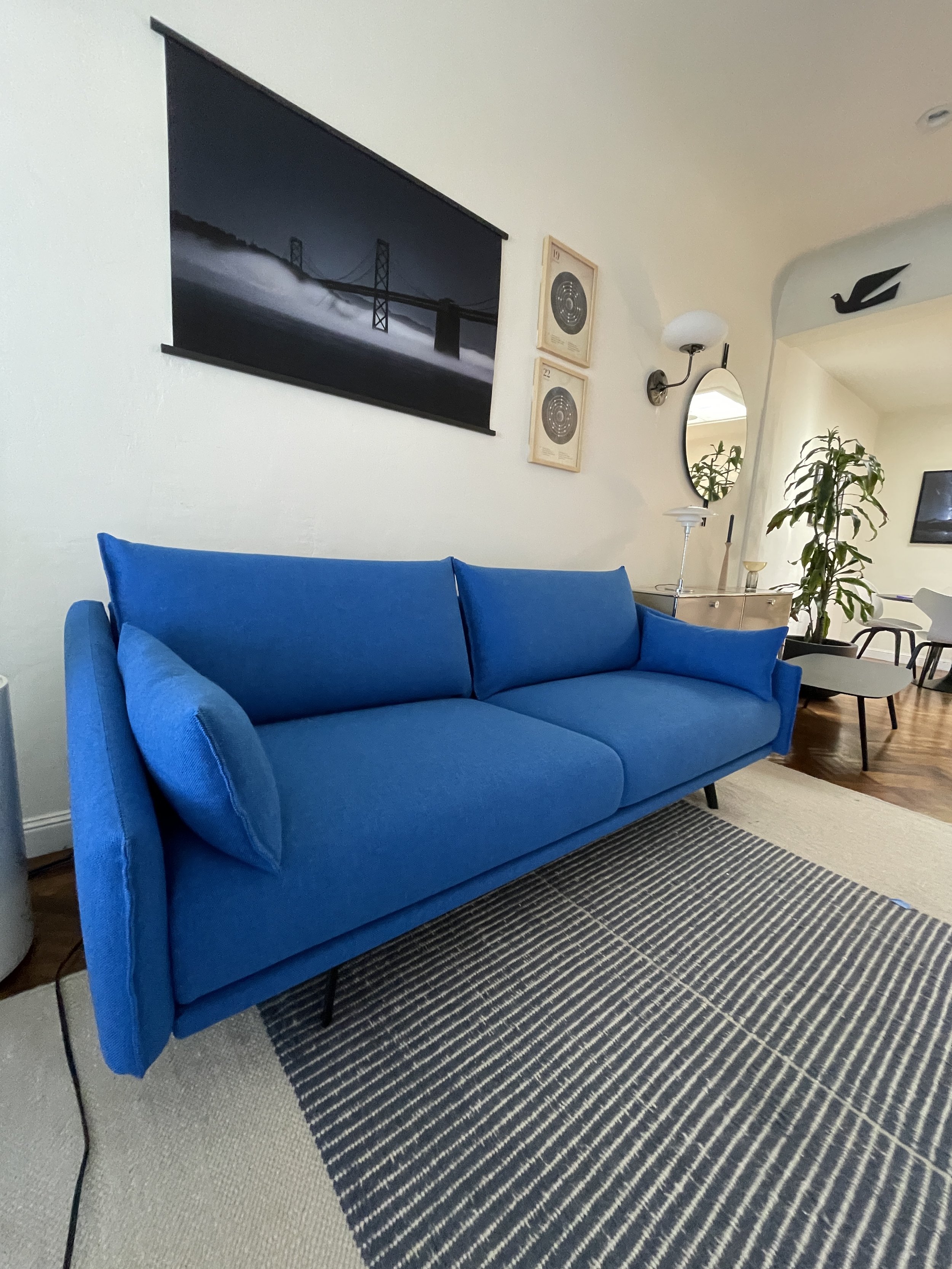Why Does my Sofa Still Look Great but Feels Worn Out?
A well-loved sofa can be a centerpiece in your home, offering comfort and style. But what happens when it still looks great but no longer feels supportive? Often, the culprit isn’t the upholstery but the foam inside the cushions. Replacing the foam can breathe new life into your sofa, extending its usability and maintaining its comfort.
Why Foam Fails Over Time
Even the best-crafted sofas can face foam deterioration. Foam naturally starts to degrade at around 8 years, and by 12 years, noticeable disintegration often occurs. The foam may break down into dust, lose its springiness, and fail to provide the support it once did.
Sometimes, the foam may not visibly disintegrate but can lose its bounce, causing you to sink into the cushions. This lack of support doesn’t just make your sofa uncomfortable—it can also strain the webbing and frame, potentially leading to further structural damage over time.
Here’s a glimpse under the surface of this vintage sofa! The foam beneath the cotton layer has been holding up since the 1970s—over 50 years! While the cotton has helped slow disintegration and off-gassing, the foam itself has started to break down. A true testament to craftsmanship of the past, but even the best-made pieces need a little refresh over time.
When Should You Replace Foam?
Foam replacement is ideal when your sofa:
Feels unsupportive: If you’re sinking into your cushions or experiencing uneven support, it’s a clear sign the foam is worn out.
Has removable cushions: This makes foam replacement easier and more cost-effective, though non-removable cushions can also be re-foamed with a bit of extra care.
Holds sentimental or aesthetic value: Heirloom sofas, or those that perfectly fit your space and style, are worth preserving with foam upgrades.
Why Heirloom Sofas Deserve a Second Chance
If your sofa is an heirloom or simply irreplaceable due to its craftsmanship, design, or sentimental value, foam replacement is a practical way to keep it in your home. Sofas made before 2010 often have higher-quality frames and construction compared to many modern, mass-produced pieces. Keeping these well-built sofas is a sustainable option that maintains both functionality and charm.
This MUA sofa, reupholstered in stunning Knoll fabric, is back to its former glory! With full upholstery and foam replacement, it’s now as comfortable as it is stylish. The perfect refresh for a timeless piece that fits beautifully in the client’s space. A modern classic, ready to shine for years to come. ✨
Protecting Your Sofa’s Frame and Webbing
When foam deteriorates, it doesn’t just affect comfort—it also puts excess strain on your sofa’s webbing and frame. A sagging seat can shift weight unevenly, leading to wear and tear on the internal structure. By replacing the foam, you can protect your sofa’s frame and ensure it remains sturdy for years to come.
Don’t Let a Good Sofa Go to Waste
If your sofa still fits your space, matches your style, and holds sentimental value, foam replacement is the best way to extend its life. Whether you have a mid-century masterpiece, a family heirloom, or a sturdy sofa from the early 2000s, investing in new foam will restore comfort and prevent further damage.
At Aby’s Upholstery, we specialize in giving sofas a second life. Reach out to discuss foam replacement and ensure your favorite sofa remains a part of your home for years to come.
Written By: Fernando Tapia

